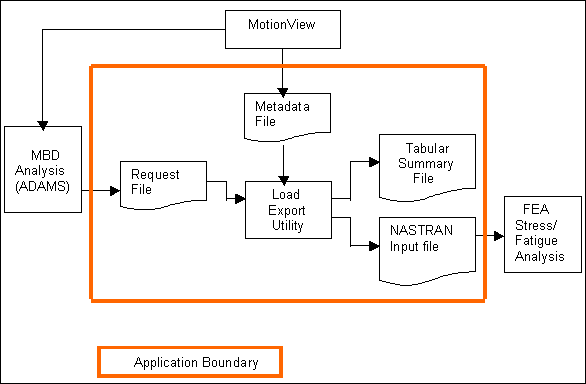Load Export |

|

|

|

|
|
Load Export |

|

|

|

|
The Load Export utility on the FlexTools menu helps bridge the gap between multi-body dynamic (MBD) analysis and finite element analysis (FEA) by:
| • | Identifying and summarizing all loads acting on one or multiple bodies for any give time step(s) in a tabular format |
| • | Identifying and transferring all the forces and moments on one component at any given time step(s) to a NASTRAN input deck that contains GRID, CORD, FORCE, and MOMENT cards |
The Load Export utility is used in conjunction with MotionView to perform the above mentioned functions. To use this utility, you must specify the components in an MBD model for which loads are to be processed. You can do this by using the MotionView GUI or editing the MDL MBD model file to add force output requests on bodies. After an MBD analysis on a model using ADAMS, you will get an ADAMS request file and a metadata file (a MotionView ASCII file that contains information of force output on a body) that are used as the input files for the utility. The application scope of Load Export is shown below:

Interaction diagram
MotionView supports force requests on body entities. To provide detailed information about the forces acting on a given body entity, MotionView automatically generates a metadata file if there are active force requests on body entities in the active model. For more information, see Metadata File Generation and Metadata File Format.
The Load Export utility is displayed. |
See Also: